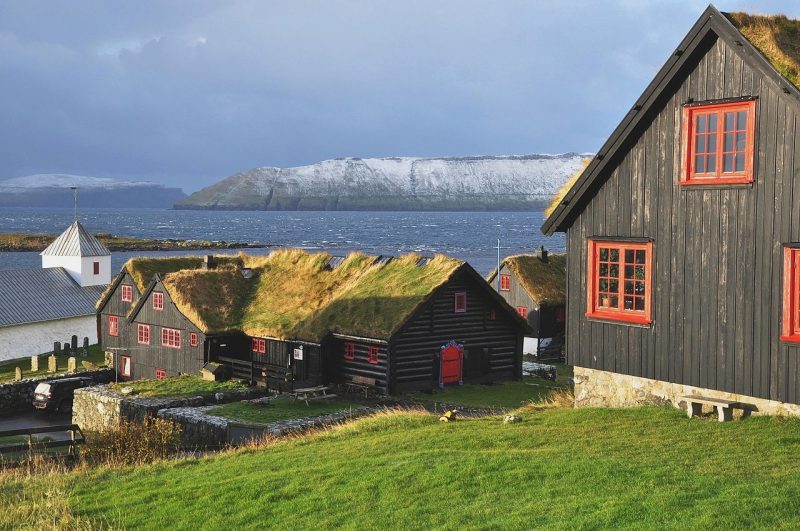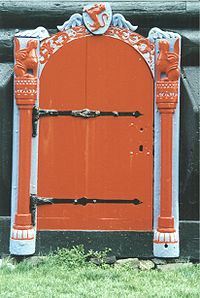Kirkjubøargarður or also known as King’s Farm is one of the oldest still inhabited wooden houses of the world and the largest farm in the Faroe Islands.
The remote farmhouse of Kirkjubøur dates back to the 11th century. It was the episcopal residence and seminary of the Diocese of the Faroe Islands, from about 1100. The legend says, that the wood for the block houses came as driftwood from Norway and was accurately bundled and numbered, just for being set up. Note, that there is no forest in the Faroes and wood is a very valuable material. Many such wood legends are thus to be found in Faroese history.
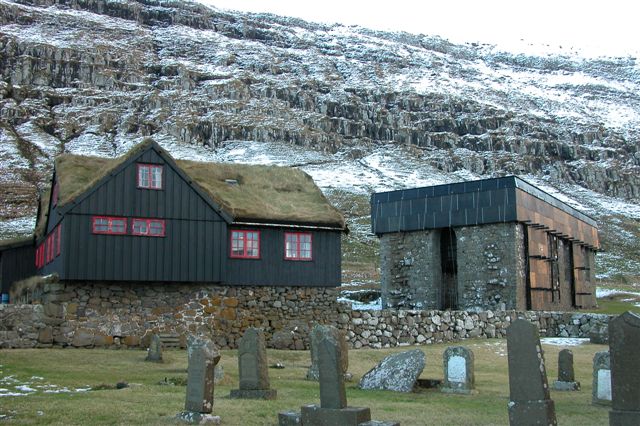
Kirkjubøur is the southernmost village on Streymoy, Faroe Islands and the country’s most important historical site, beside the King’s farm, the village holds the ruins of the Magnus Cathedral from around 1300, the Saint Olav’s Church from the 12th century.The village was important in the Middle Ages. At that time, it was the episcopal residence for the Diocese of the Faroe Islands and as such the spiritual centre of the society. In those days, the village is said to have had around 50 houses. The majority of these houses were washed away by a fierce storm in the 16th century, which created the islet Kirkjubøhólmurin, which contains ruins from that time.
The oldest part is a so-called roykstova (reek parlour, or smoke room). Perhaps it was moved one day because it does not fit its foundation. Another ancient room is the loftstovan (loft room). It is supposed that Bishop Erlendur wrote the “Sheep Letter” here in 1298. This is the earliest document of the Faroes we know today. It is the statute concerning sheep breeding on the Faroes. Today the room is the farm’s library. The stórastovan(large room) is from a much later date, being built in 1772.
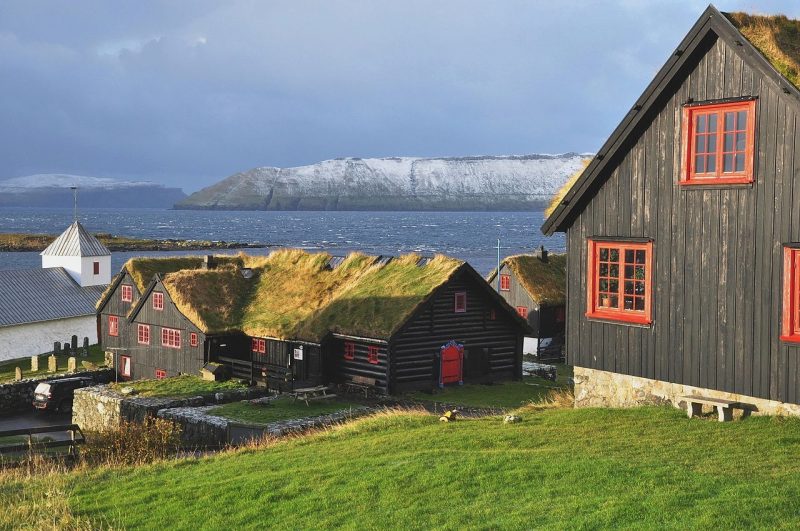
Though the farmhouse is a museum, the 17th generation of the Patursson Family, which has occupied it since 1550, is still living here. Shortly after the Reformation in the Faroe Islands in 1538, all the real estate of the Catholic Church was seized by the King of Denmark. This was about half of the land in the Faroes, and since then called King’s Land (kongsjørð).
The entrance of Roykstovan was destroyed in 1833. This true to original copy was timbered and carved by the King’s Farmer Jóannes Patursson in 1907. On the top is the Norwegian Lion, indicating that the Faroes were a Norwegian colony after the Viking age.
The largest piece of King’s Land was the farm in Kirkjubøur due to the above-mentioned Episcopal residence. This land is today owned by the Faroese government, and the Paturssons are tenants from generation to generation. It is always the oldest son, who becomes King’s Farmer, and in contrast to the privately owned land, the King’s Land is never divided between the sons.
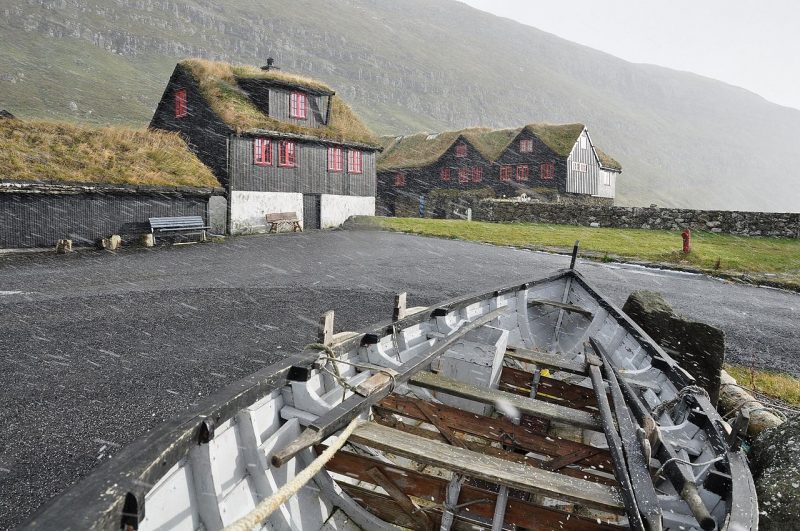
The farm holds sheep, cattle and some horses. It is possible to get a coffee here and buy fresh mutton and beef directly from the farmer. In the winter season, there is also hare hunting for the locals. Groups can rent the roykstovan for festivities and will be served original Faroese cuisine.
Other famous buildings directly by the farmhouse are the Magnus Cathedral and the Saint Olav’s Church, which also date back to the mediaeval period. All three together represent the Faroe Island’s most interesting historical site.
